Omakase-style sushi is a major part of the dining scene in Tokyo and Japan as a whole.
Omakase, meaning “I’ll leave it up to you” in Japanese, is a dining experience with no menu to choose from. Instead, you place your trust as a diner in the chef’s experience, skills, and understanding of ingredients to curate the perfect meal for you.
As an ardent enthusiast of Japanese cuisine, I’ve been keen to dabble with omakase-style sushi for some time, eventually hoping to sample some of the top high-end sushi shops in Tokyo.
Unfortunately, since I had planned my September 2022 Japan trip relatively last-minute, there was little hope of getting a hotly-contested reservation at the top establishments.
Instead, I decided to start my omakase journey with a well-respected sushiya where I could manage to secure a reservation on short notice, which led me to Ginza Sushiko Honten.
Ginza Sushiko Honten – About the Restaurant
Ginza Sushiko Honten is one of the oldest sushi restaurants in Tokyo, with over 130 years in business. The sushi shop first opened its doors back in 1885.
The restaurant, tucked away in an unassuming Ginza back-alley, has only 10 seats at their sushi counter. This allows for a very interactive and intimate sushi experience with the chefs as they prepare your food.
The sushi shop has also made its way into the world of television, appearing on Anthony Bourdain: Parts Unknown, in which Bourdain visited the shop alongside the renowned Japanese chef Masa Takayama.

Ginza Sushiko Honten had been labelled as a one Michelin star restaurant in the past; however, it appears to have lost this recognition in 2016.
Ginza Sushiko Honten – Booking
Reservations are recommended at Ginza Sushiko Honten, given its limited seating. You can either make one by calling the restaurant, or in my case, I booked using the concierge service at Conrad Tokyo.
I had asked the concierge for a list of recommended sushi options, given that the most city’s top establishments were all booked for my dates.
After taking notes of my availability, the concierge presented a few options, and I discussed with them the type of experience I was looking for before settling on Ginza Sushiko Honten. Since the hotel had my credit card on file, they went ahead and secured my dinner spot for that very same evening.
Your best bet for most sushi establishments in Tokyo is to book via a hotel concierge. Many top restaurants prefer to work only with hotel concierges or other concierge services directly, rather than taking reservations from the public (if they even accept outside reservations from non-regulars in the first place).
Also, note that most places have strict cancellation policies, so you’ll want to be firm in your plans before making a reservation. Ginza Sushiko Honton charges a fee of ¥10,000 ($95 CAD) per person if you cancel within three days of your reservation.
Ginza Sushiko Honten – Location
This sushi restaurant is tucked away in the alleyways of Ginza, one of Tokyo’s liveliest neighbourhoods for high-end dining and shopping.
It’s nestled among many other eateries and entertainment venues that line the backstreets, while the flashy retail stores are more prominent out front.
The space is easy to miss due to its discreet location, and is only marked by a small Japanese sign illuminated to the left of the entrance.
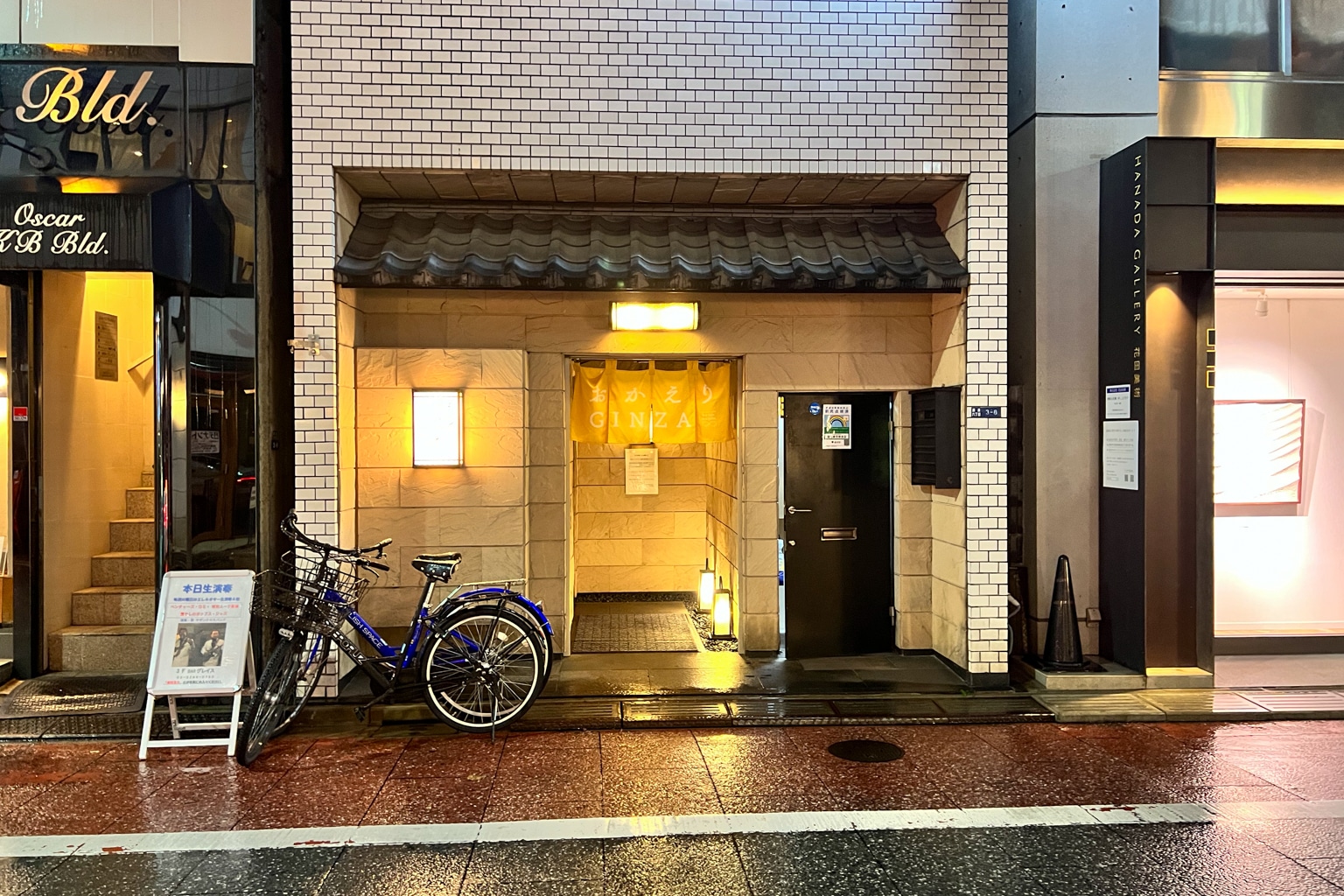
The shop is centrally located just a 20-minute walk from the Conrad Tokyo, and a quick three- and seven-minute walk to the Ginza and Shimbashi Tokyo Metro stations, respectively.
Note that this restaurant can be easily confused with other venues also named “Sushiko” or “Sushiko Honten” in Tokyo, some of which also happen to be situated in the Ginza district. Make sure you verify the restaurant’s address before you book.
Ginza Sushiko Honten – Menu
Ginza Sushiko Honten serves a traditional Japanese style of sushi with slight hints of modernity.
Prices for omakase vary significantly in Tokyo, but usually fall in the range of 10,000–50,000 yen ($95–475 CAD) per person. Some places charge more for dinner than lunch, while others will charge a similar price for both meals.
This restaurant primarily serves omakase lunches and dinners for 25,000 yen ($240 CAD) per person. Additionally, the restaurant serves a selection of special Japanese sake from all over the country.
I felt this was a reasonable point on our omakase journey, considering the shop’s history, the concierge’s recommendation, and the previous Michelin recognition. It’d definitely be a splurge, but since this was our long-awaited first post-pandemic trip to Japan, that’s exactly what I was in the mood for.
Ginza Sushiko Honten – Dinner Experience
We were greeted by a restaurant attendant upon arrival, who confirmed our reservation details and kindly showed us to the stairs leading to the upper floor.
A simple but traditional space surrounding the sushi counter awaited us upstairs.
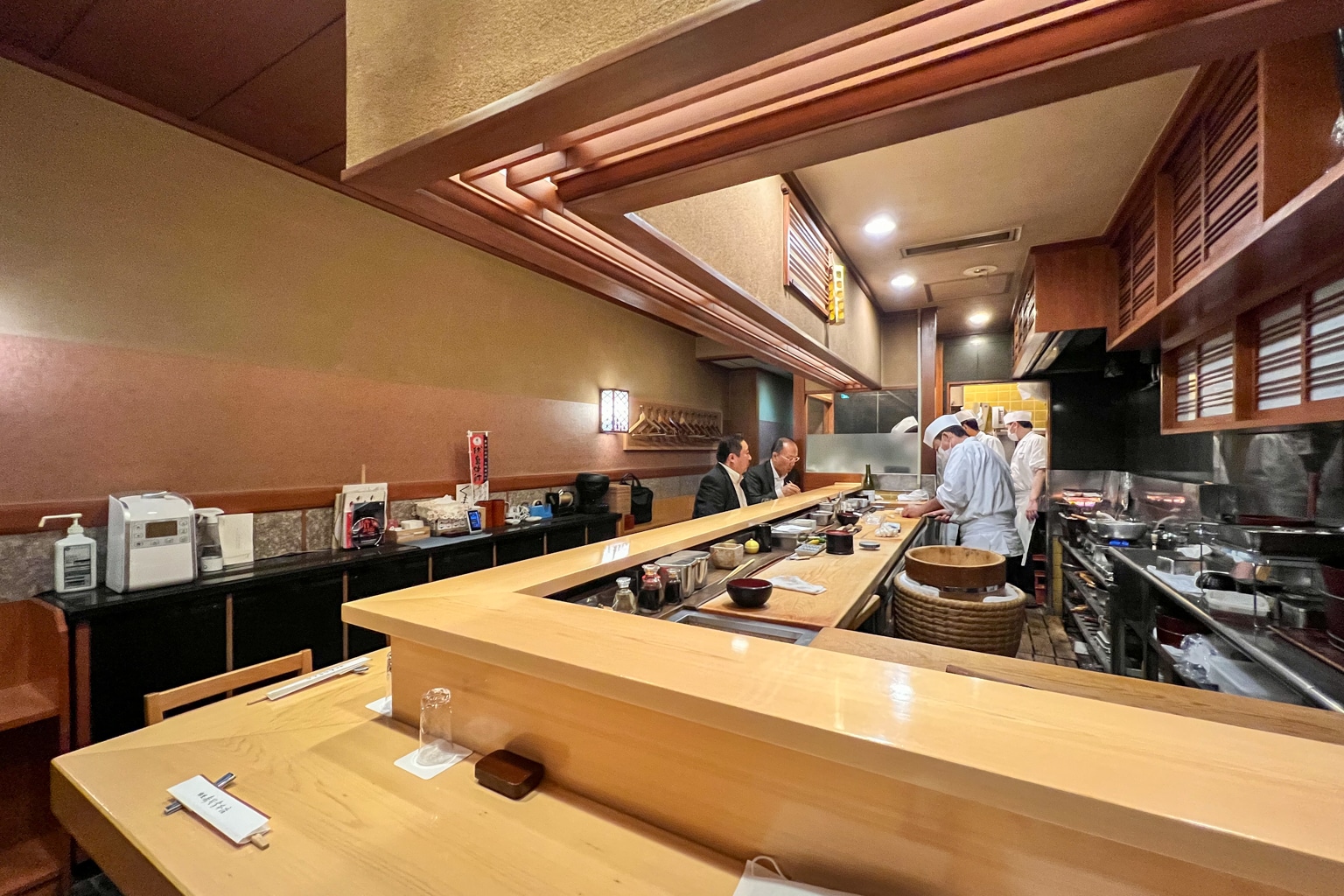
10 seats may seem intimate, but it’s actually considered a larger space compared to Tokyo’s top-of-the-line shops, many of which are limited to just six diners per sitting.
One of the sushi chefs promptly greeted us, speaking a few words in English. He asked us whether we’d prefer to try sushi, sashimi, or both (of course, we opted for both), and then offered us a choice of drinks for the evening.
We decided to go with some sake, and were presented with three different samplers of sake to choose from. We took a few sips and selected our favourite, which was balanced and not too sweet, and were then presented a full bottle with two cups.
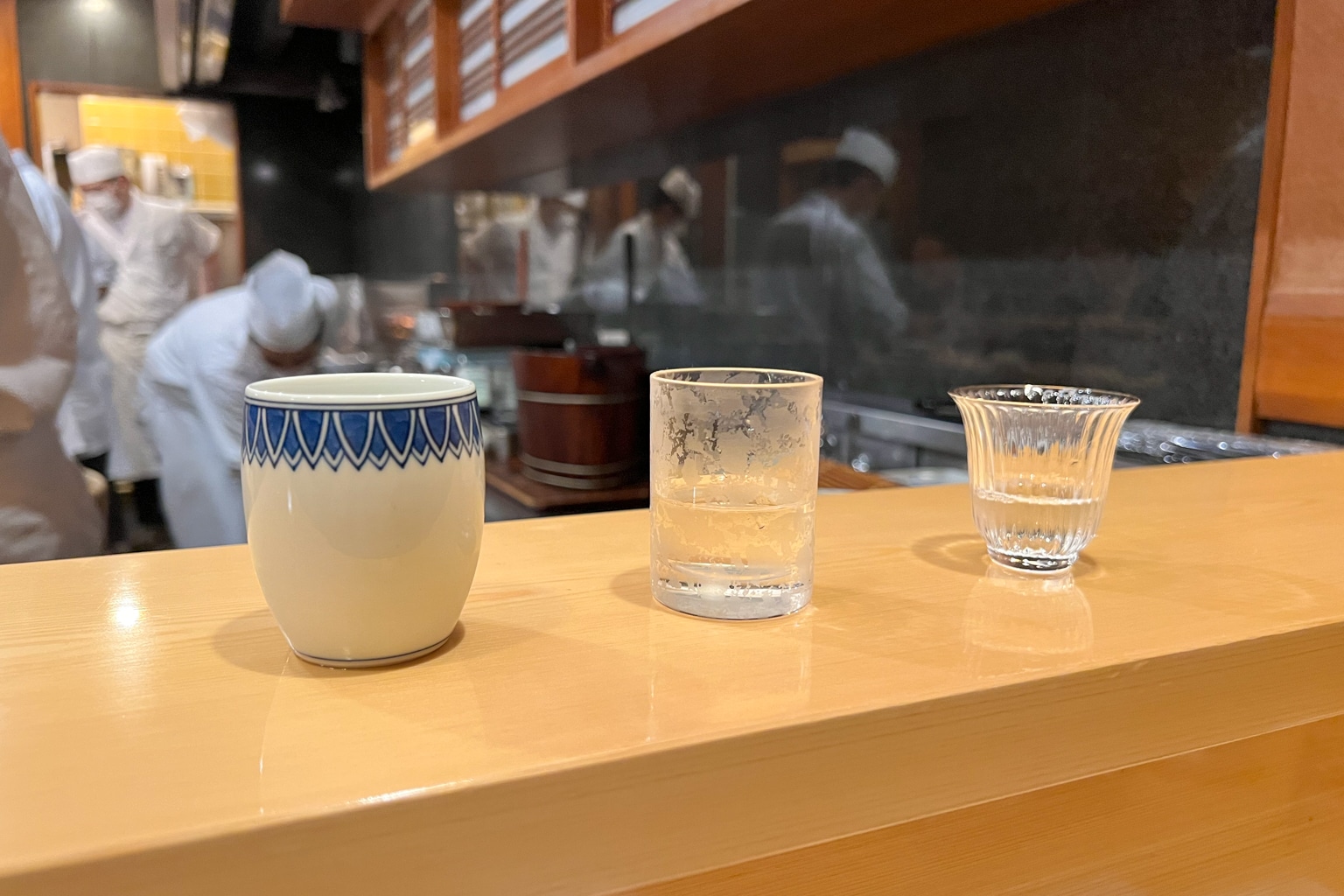
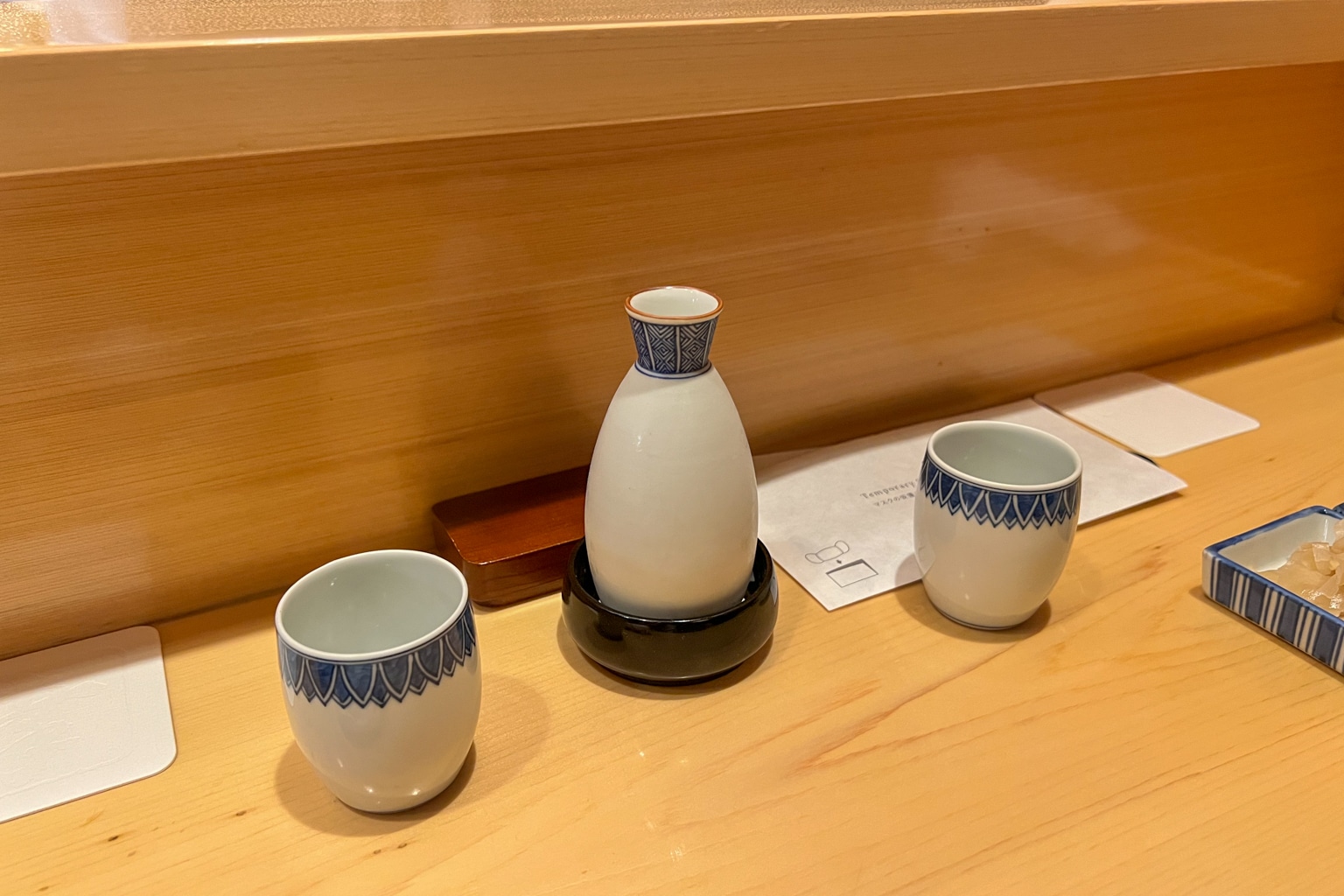
Since we were at omakase, the chef then simply went ahead and began preparing our customized dishes.
Over the course of the evening, we noticed that each set of guests was treated to a slightly different menu, while some Japanese-speaking guests (possibly regulars) would speak to the chef first to let them know what they were in the mood for.
Here at our first omakase meal, we were looking forward to absorbing the experience as it was presented to us, rather than dictating the proceedings – so we simply sat back and awaited the first dish.
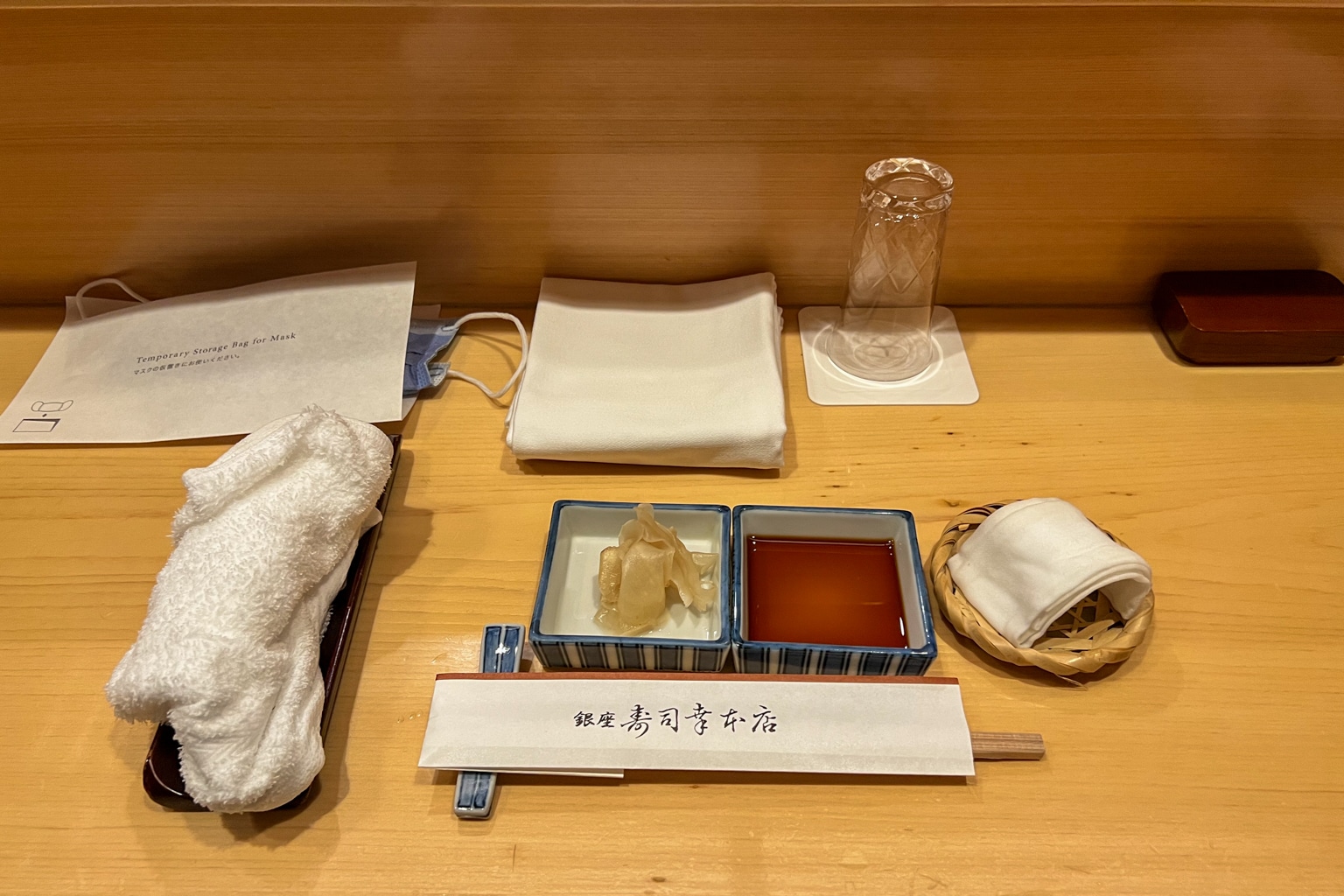
For each dish, we keenly watched as the chef prepared the item in front of us, from finely slicing a fresh cut of fish, to wielding fire for the torched items, to carefully arranging everything on the plate.
The chef then placed each plate on the countertop in front of us and briefly described each item in English, before we were invited to bring the plates down to our tables and dig in.
1. Crab
The meal began with a crab dish, which was done with a creamy sauce and had pepper sprinkled over the top. It was a perfectly fine introductory item that opened up our palates for more to come.
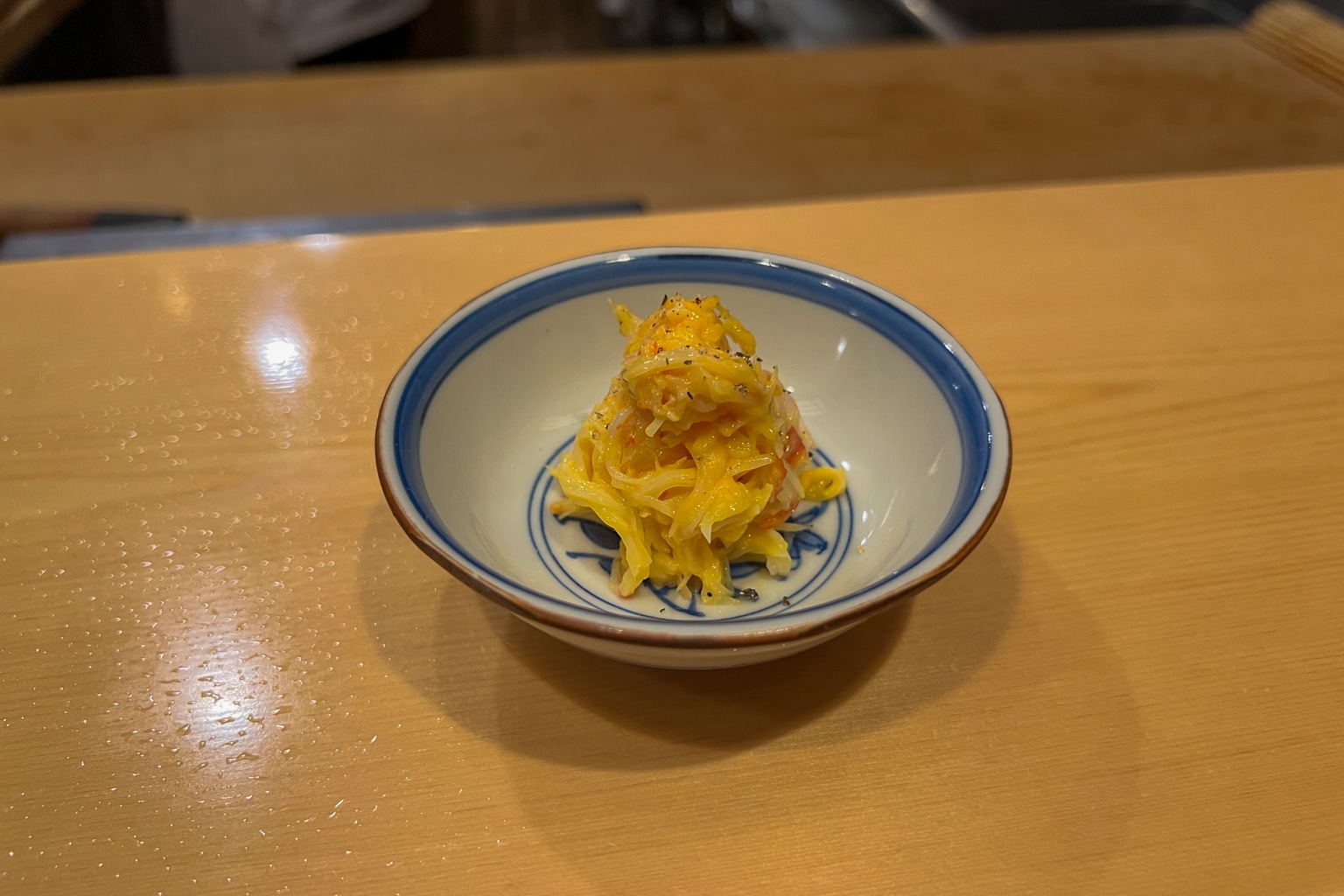
2. Abalone
Next up, a bite of abalone presented in a soy-based sauce, which was delectable. The abalone was firm and had a subtle taste, which went well with the stronger flavours of the sauce.

3. Bonito, Amberjack, and Grilled Toro Sashimi
This plate of a sashimi trio was delightful, and was one of my favourite dishes of the evening.
The bonito was already nicely seasoned with soy sauce and topped with onion for an extra dash of flavour.
The grilled toro was downright decadent, offering the perfect mixture of rich flavour and butter-soft texture that compelled me to close my eyes and slowly savour.
Lastly, the amberjack was more rubbery in texture and had a very light taste that balanced out the other two.
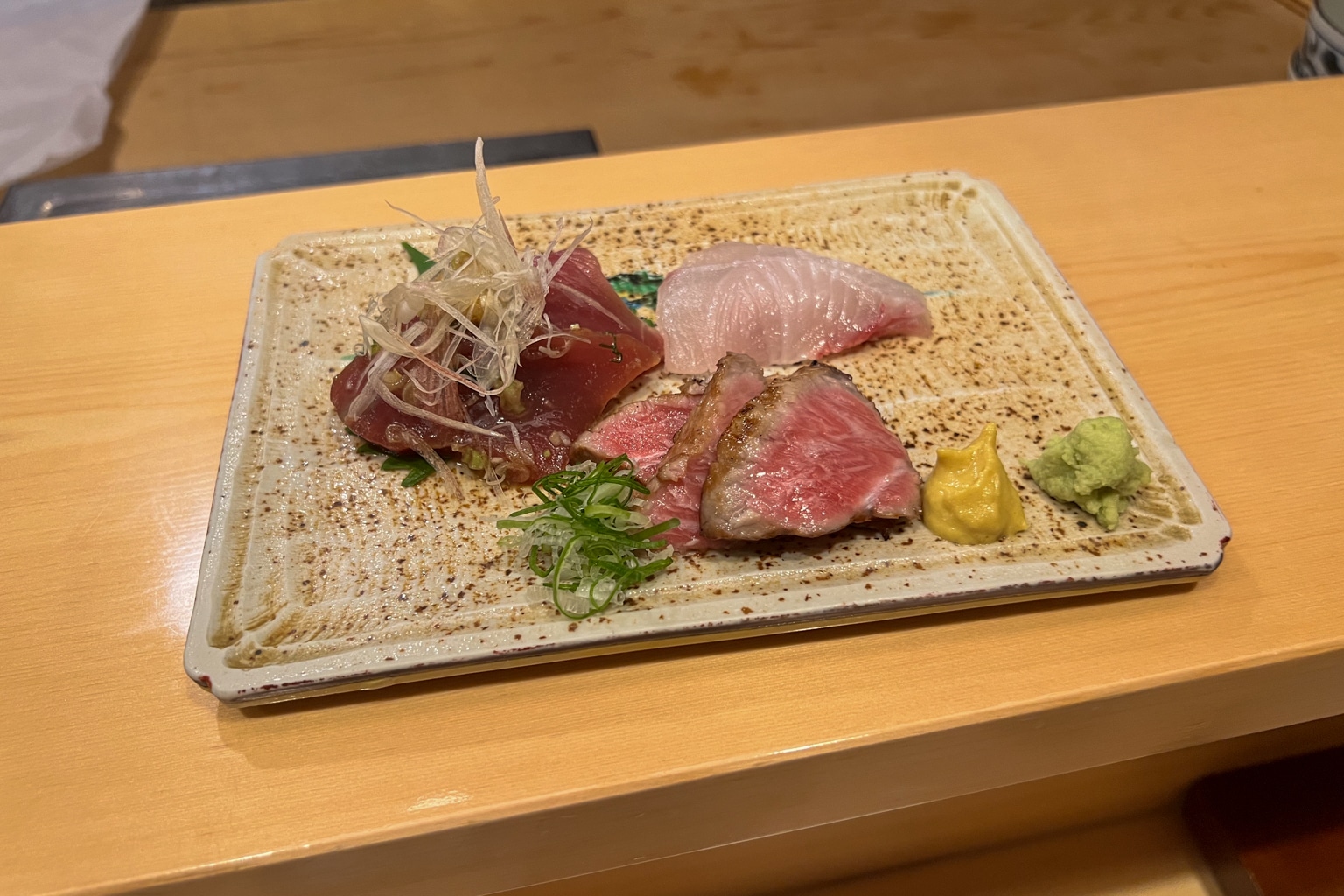
4. Silverfish
A cooked piece to intersperse the raw items, the silverfish had a light and fluffy texture, and was tasty if not overly memorable.
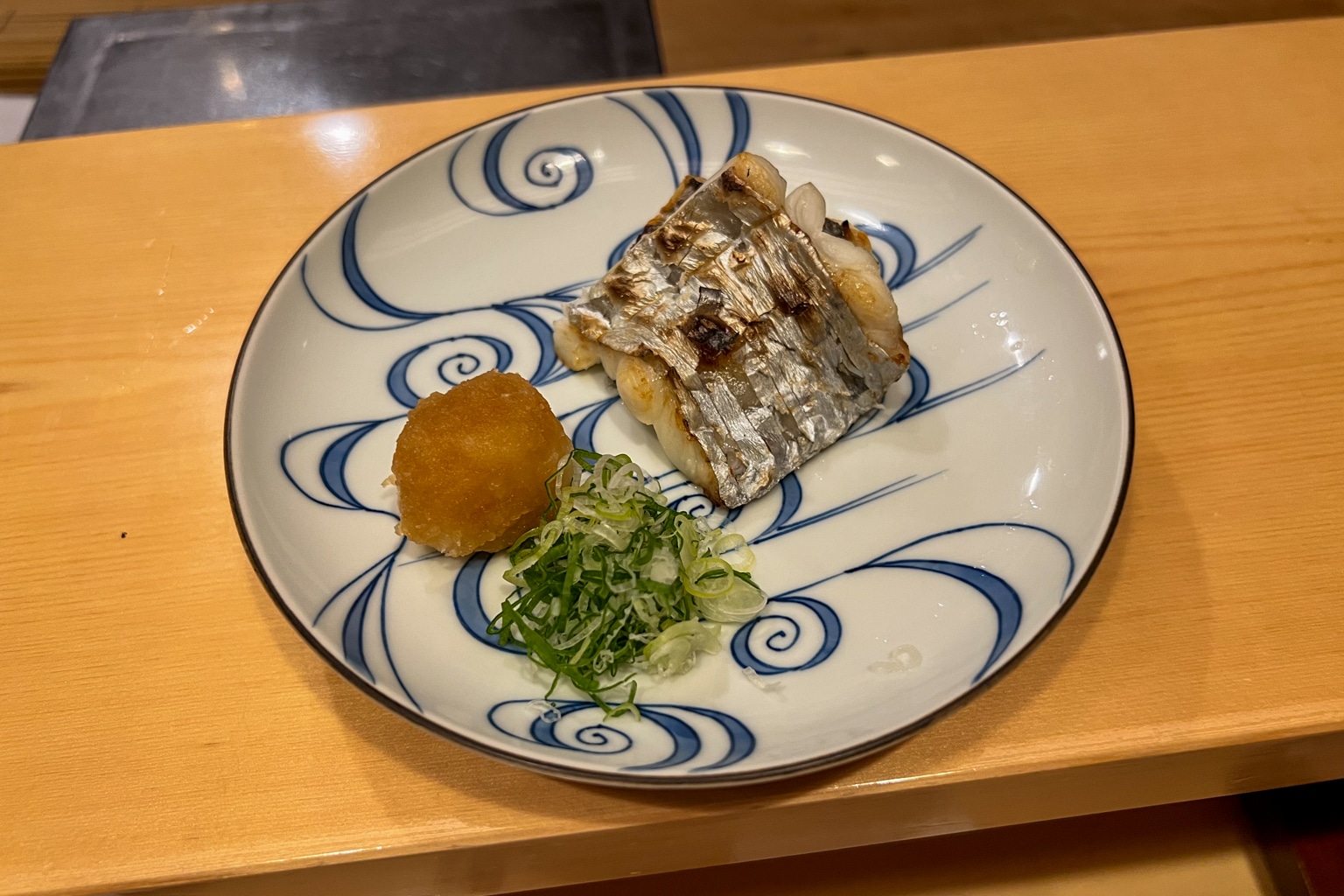
5. Tuna
I always appreciate a refreshing piece of tuna. The flavour was mild with a slippery texture, and made for a pleasurable bite, setting the stage for the fattier piece to come.

6. Toro
The toro (fatty tuna) was exquisitely rich and buttery, melting in my mouth beautifully and leaving delivering rich pulses of umami flavour across my palate as it did so. The single-best item of the meal.
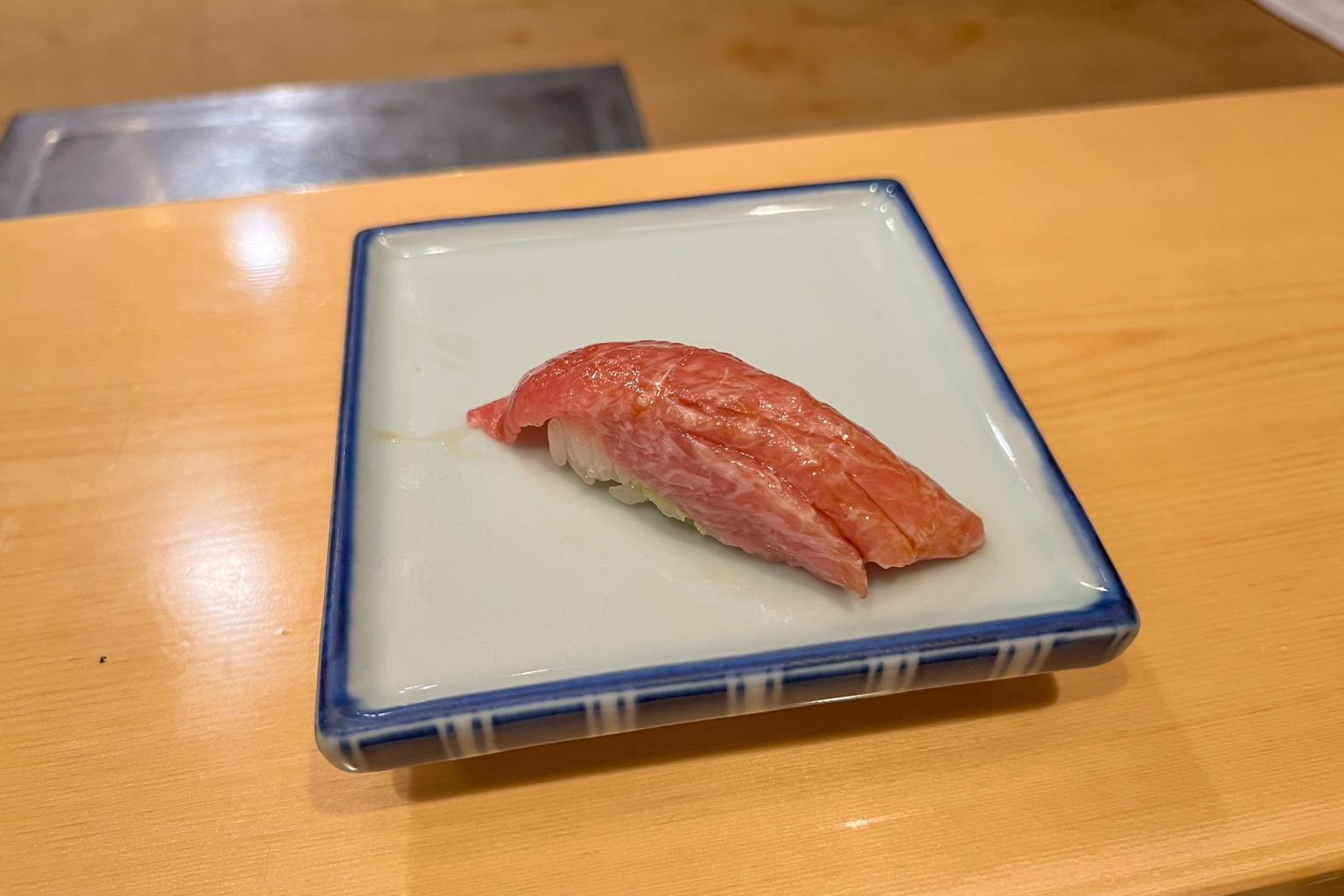
7. Squid
The squid sushi was extra rubbery and a bit gelatinous in texture. It was dressed with large salt crystals on top and drizzled with lemon juice, punctuating the rich tuna flavours that came previously and the more modest fish to come.
I’d have to say this was one of my least favourite plate of the night.

8. Mackerel
The mackerel was a nice change from what we’d been served so far. It was flaky and gingery, and the fish texture was sweet but mild.
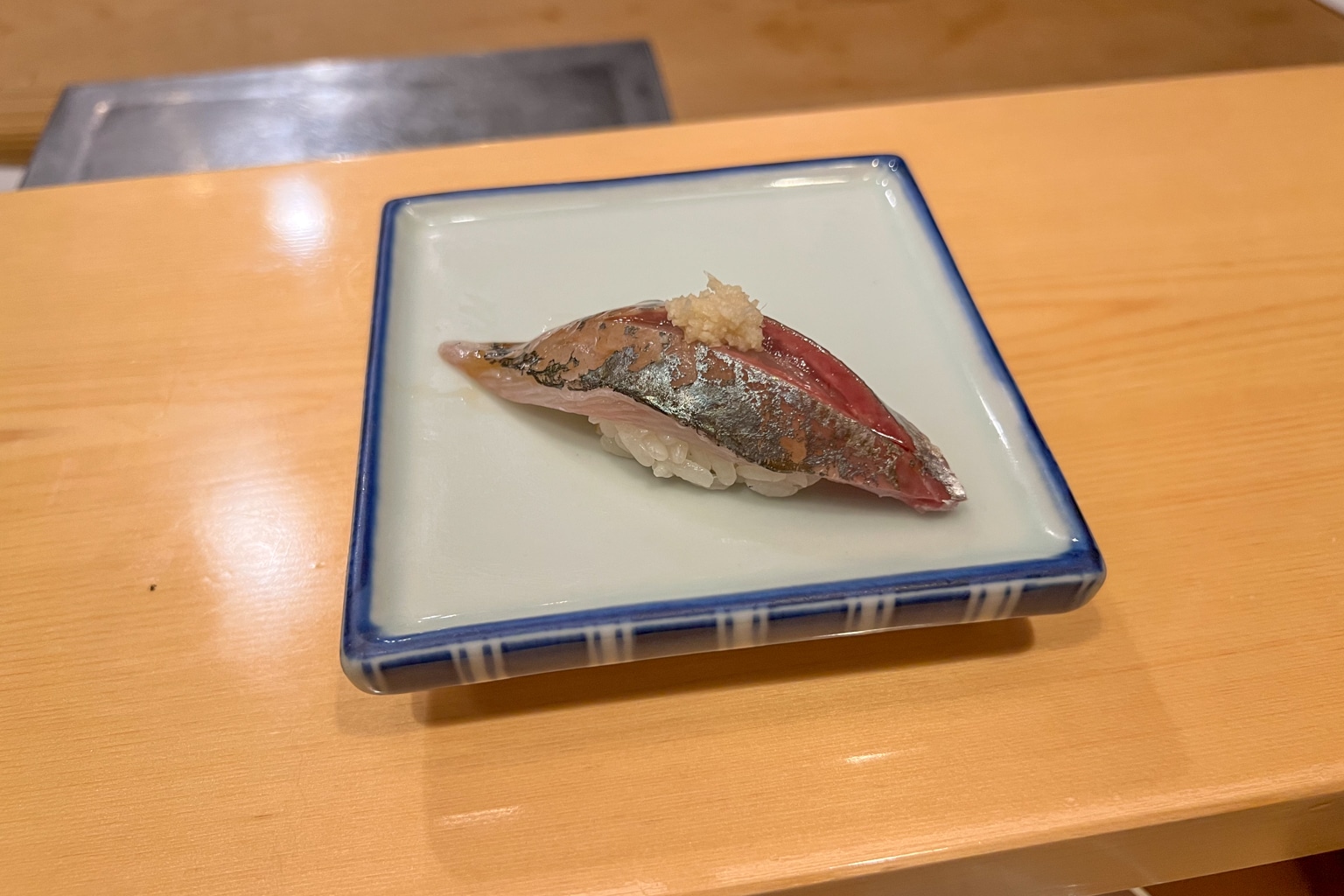
9. Flounder
Following the mackerel, we were presented with flounder, lightly brushed with sweet soy sauce. This item was still tasty, but fairly unremarkable compared to the rest.
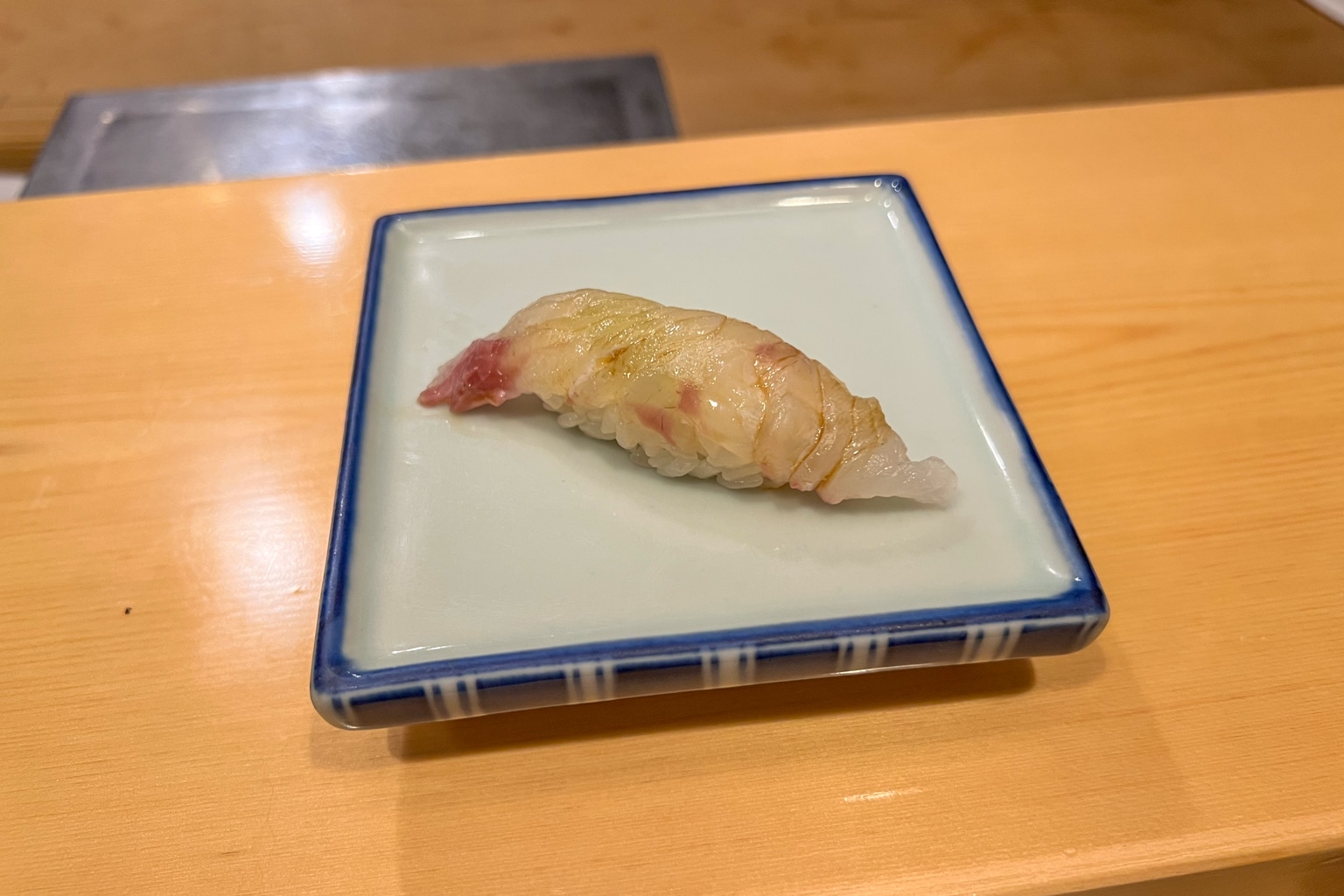
10. Grilled Toro
We were then treated to some grilled toro again, this time served sushi-style. I was ecstatic to have one more bite of that delicious grilled fatty tuna, and the rich and buttery tuna meat once again delivered a melt-in-mouth sensation.
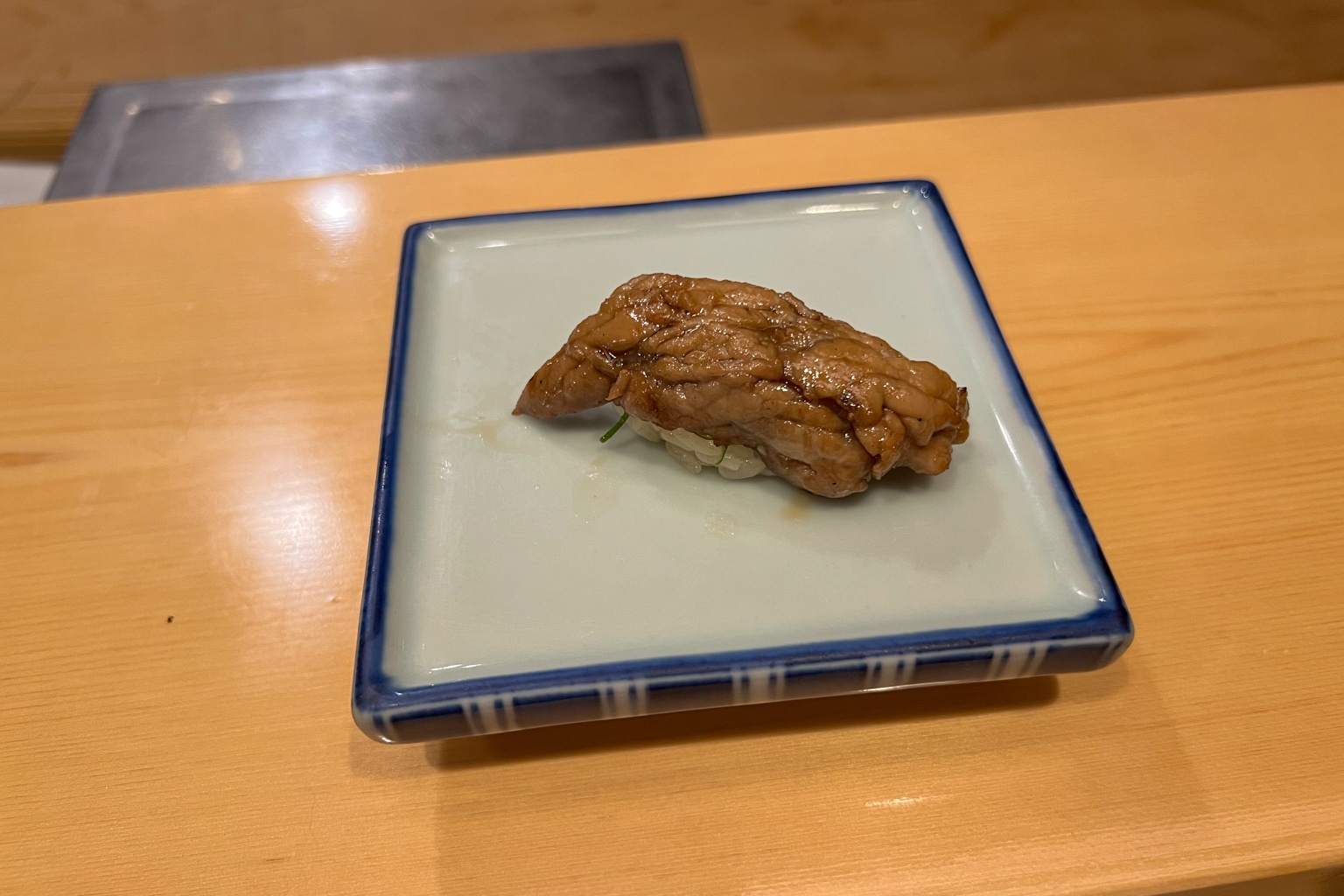
11. Toro-taku
The toro-taku – a mixture of toro fatty tuna and chopped takuan, or pickled daikons, rolled together with seaweed in the maki style – was among the best dishes of the evening.
It was exceptionally decadent in flavour, and I particularly appreciated the crunchy texture here as a welcome complement to the slippery pieces so far.
This item wrapped up our sushi for the evening, and I thought it was the perfect note on which to end.
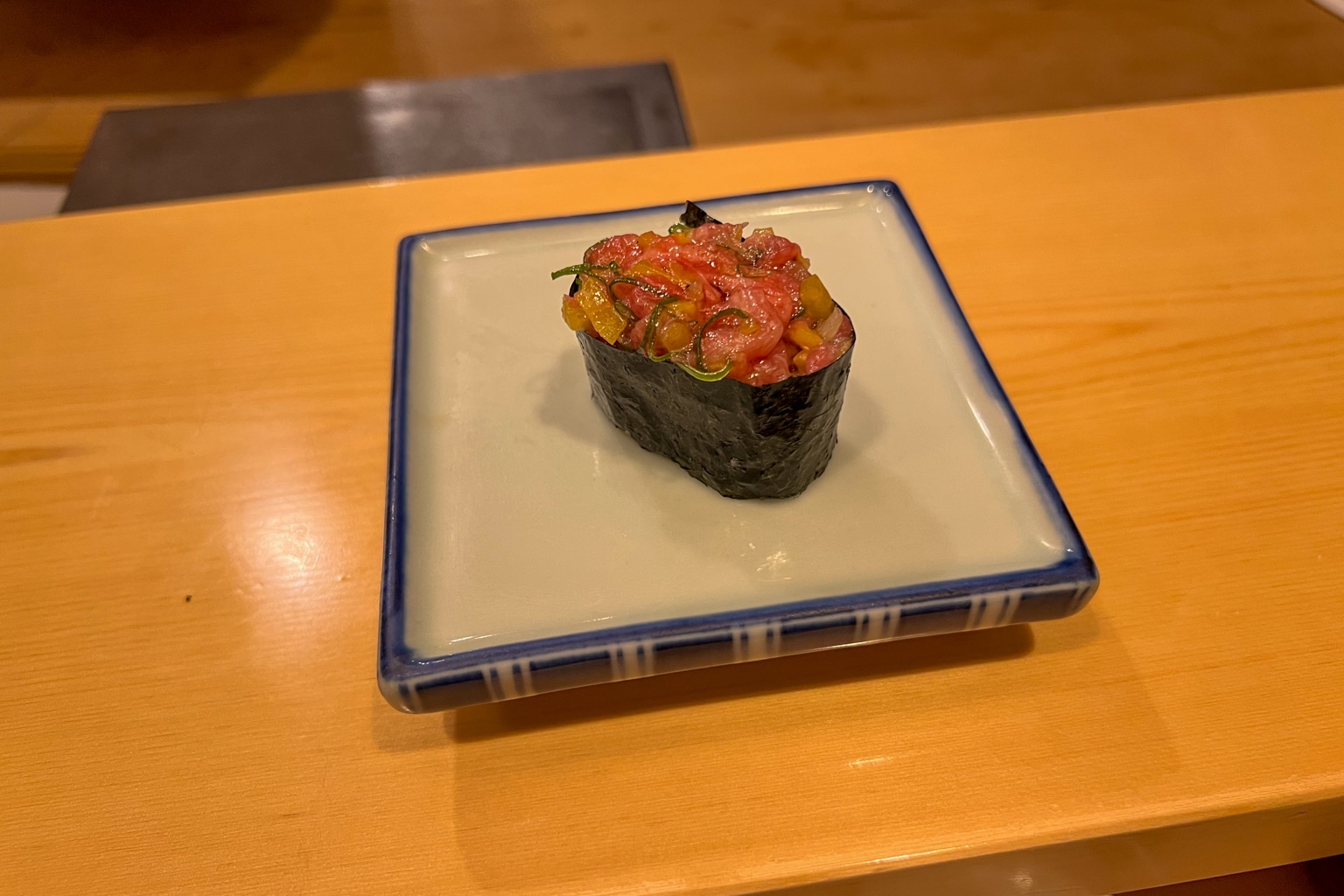
12. Miso Soup
We began wrapping up our meal with a nice bowl of warm and delicious miso soup, which was served with whole scallop pieces and spring onion mixed in.
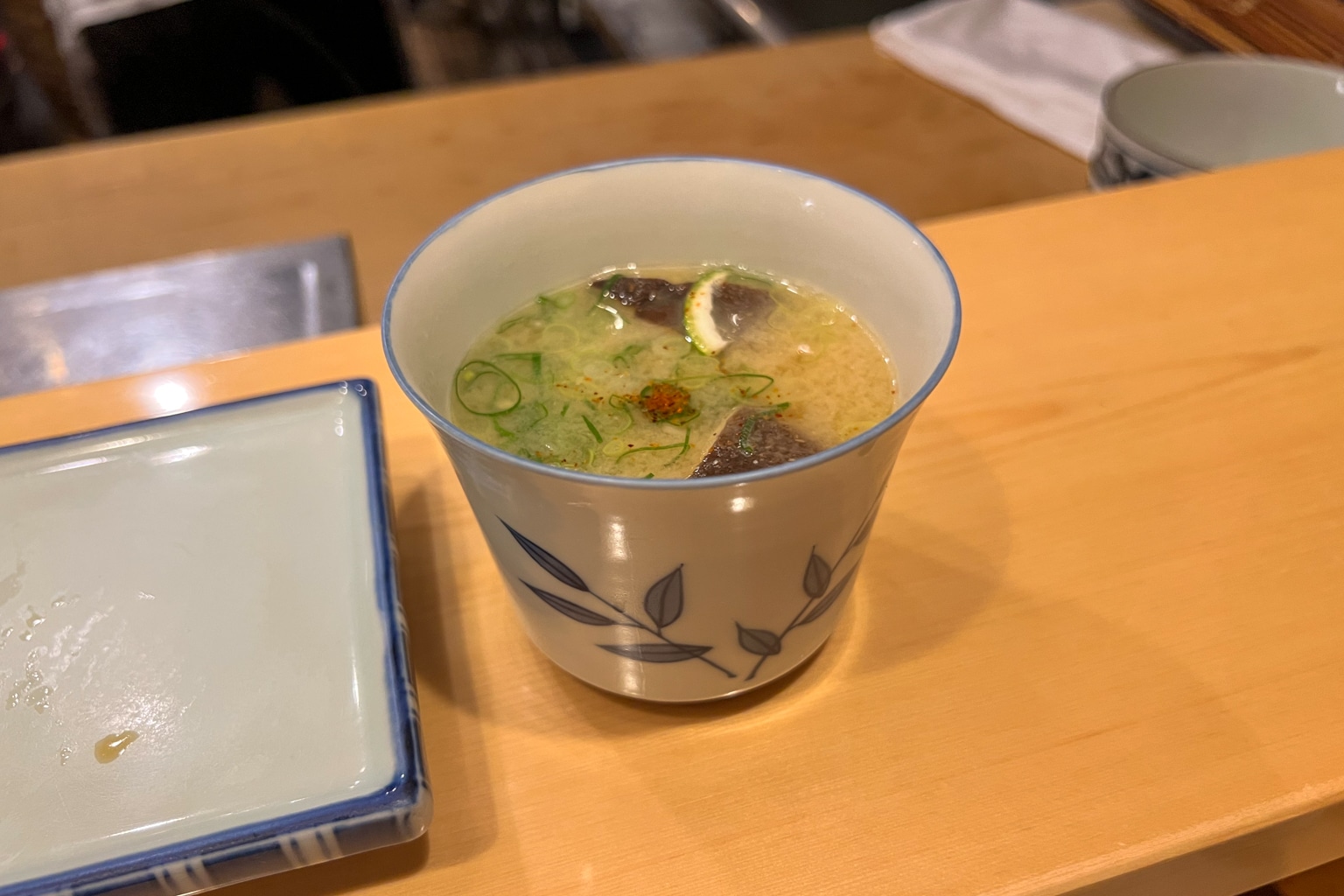
13. Grapes
Lastly, we were given some seedless grapes as a sweet finale to our dinner, served in a simple presentation with a single toothpick.
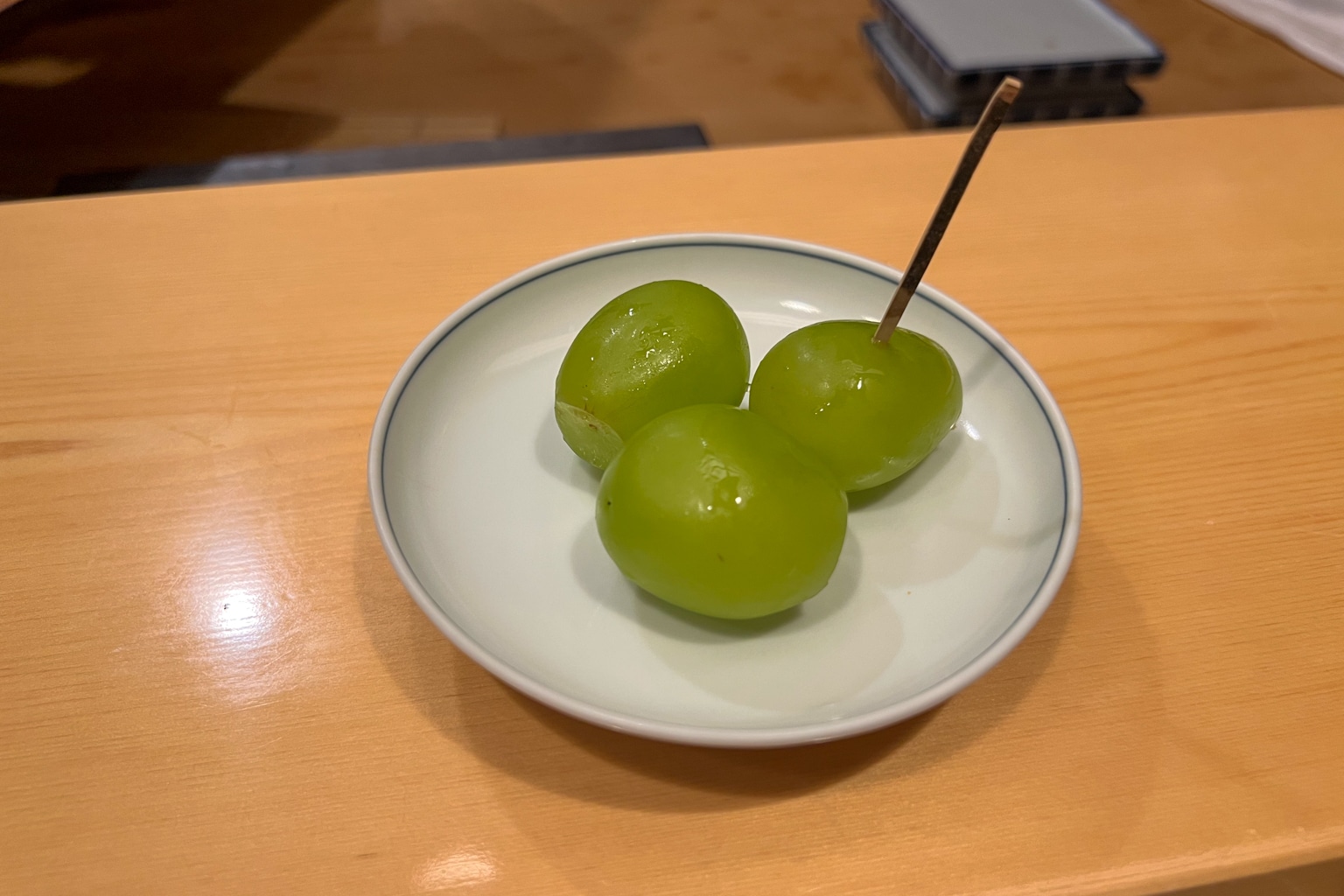
And to help wash down our meal, we ended the night with a delicious cup of green tea, presented in a beautiful cup.
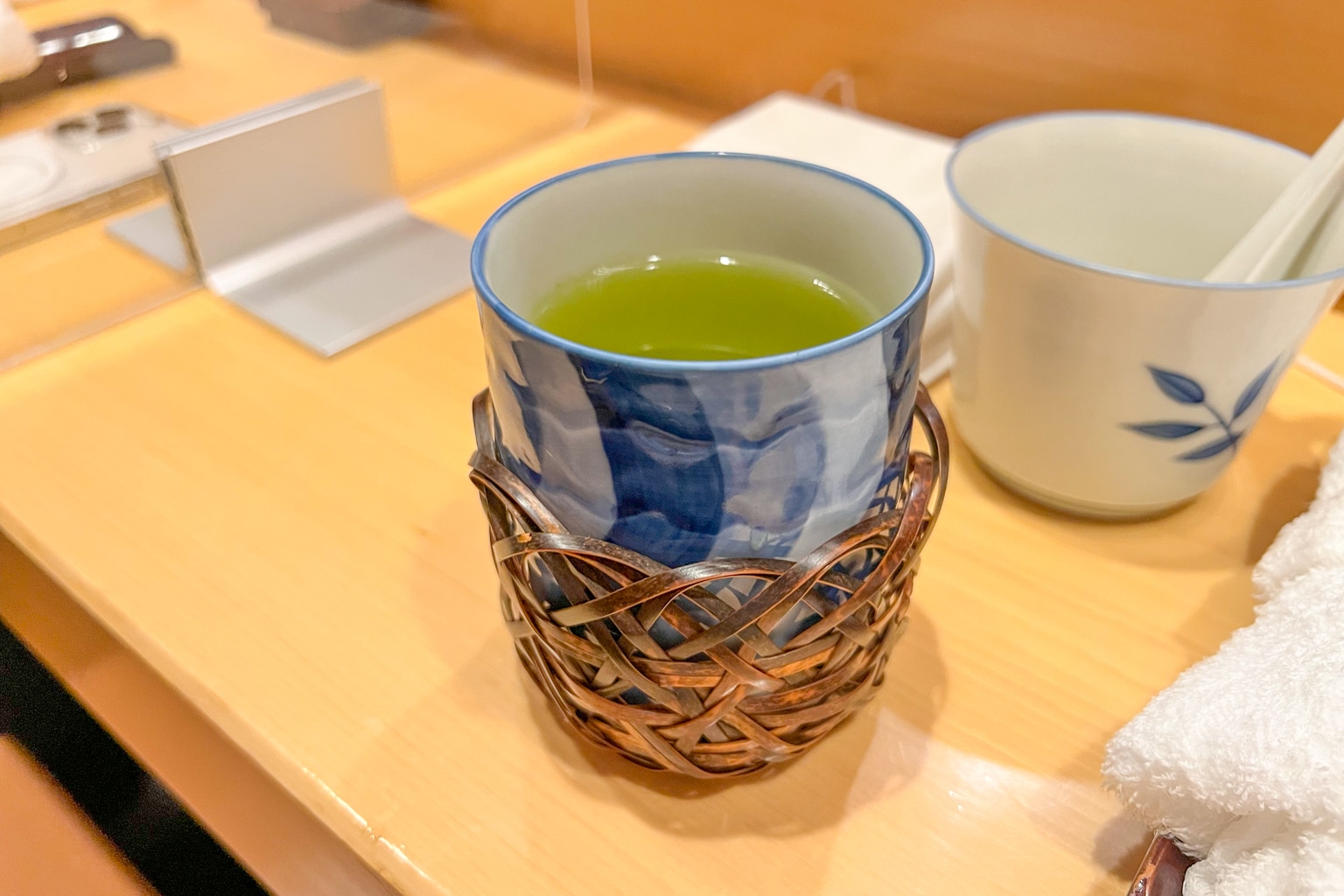
Although the portions don’t seem like much individually piece-by-piece, they were just the right amount in total, and we left feeling satisfied but not too full.
Our final bill came to 59,400 yen ($566), including the omakase dinner for two and our bottle of sake.
It’s probably the most expensive dinner we’ll be having on this trip, but we were glad to finally kickstart our sushi omakase journey on our return to Tokyo, and we both concluded that we were highly impressed by with our meal.
Conclusion
If you like Japanese cuisine, sushi omakase is certainly one of the must-try gastronomic pursuits on your next trip to Japan, and Tokyo in particular with its high concentration of top-tier sushiya.
We had a pretty great first omakase experience here at Ginza Sushiko Honten. Based on the restaurant’s history, stature, and quality, I’d recommend this place if you’re comfortable with its price range; however, I certainly get the sense that there are cheaper Tokyo sushi shops that can also give you a fine introduction to omakase and may offer better value for money.
However, I also look forward to trying out more omakase shops in the future, and thereby refining my palate and developing a better ability to compare and contrast the many omakase experiences available all across town.



















